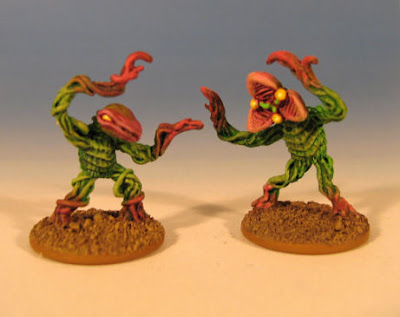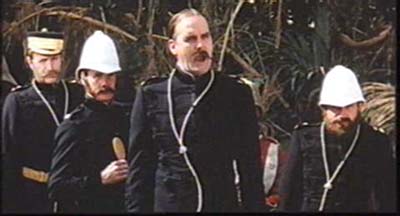This hybrid vehicle, shown in the livery of the
White Russians, is another quality product by
Vanvlak Industries:
The BK-1 Pillbug Rotary Tank
One of the less well-known tractor designers in American history,
Charles ‘Cop’ Keiston was a brilliant innovator who lost out to
Holt for lack of funding. Apocryphal industrial legend tells how despairing of ever finding a cost-effective method of fabricating reliable track links,
Keiston was toying with a wooden model of an idler wheel when this rolled away and trundled over his work bench, scattering toy soldiers left there by his nephew. The inspired designer reinvented his concepts and came up with a tractor which was driven by one man in a fixed cabin, with an engine mount at the rear driving a huge cast wheel surrounding the driver and engine compartments. The ingenious transmission and clutch systems which drove the machine were installed in a wooden mock up, called
‘The Pillbug’. Traction of farm implements would be achieved by means of fixed trace brackets on either side of the rotating hull of the machine.

The wooden demonstrator was successfully presented at the
Tanksarusse State Fair, where it attracted a lot of attention but no sales. This successful demonstration drew the attention of financier
Tobias Butler, who realised the machine (...as intended) had military potential. Within a week the
Butler-Keiston Manufacturing Company had been registered, and the first metal tractor, the
BK-1, called, like the prototype, the
Pillbug, trundled across the
Tanksarussee grassland five months later.
Appearing late for WWI, the new rotary tank was lacking a market. The redoubtable
Butler approached Russian financiers, and through them sold four of the
Pillbugs to the
White Russian forces. Intending to use the
Russian Civil War as a proving ground, both
Butler and
Keyston embarked with their vehicles in March 1919. Little is known about the performance of the
BK-1. Non-rotating side sponsons were fitted to the sides of the hull in Russia, armed either with a pair of light machine guns, or with a single light cannon of unknown calibre on one sponson and a machine gun or the other.

Although the tanks took part in some skirmishes, the well-designed drive and clutch systems were beset by troubles in the cold, dusty or muddy Siberian environment, and lacking maintenance and spares, the little tanks fell one by one into disuse. At least one was however successful in supporting White troops attacking a
Red troop train on the
Trans-Siberian Railway. Plagued by clutch slip problems, however, the
Pillbugs were soon abandoned as they became prone to gyration: the sponsons and crew compartment would start to rotate along the wheel, resulting in loss of control and a very dizzy crew.
Keiston, involved in one of these incidents, gave up his plans and returned to America to become the successful founder of a toy industry.
Butler disappeared late in 1919; it was rumoured that angered by the plight of civilians tormented by the less sympathetic
White commanders, he switched sides, and for some time there was mention of
‘Red Butler’ in the more volatile
American West Coast press.
One of the tanks disappeared without trace; a second is rumoured to survive hidden away in a Siberian barn. The other two were sold for scrap, although one of these was preserved for some years in Kursk prior to its ultimate fate. Leading an attack against a beleaguered
Red strongpoint, the tank suffered clutch slip and rolled down a hill crushing a
White Cossack charge, to become the sole recipient of the
Tractor-Tank-Hero of the People Star.
 Like me, you probably have a shocker right now...try Naughty Nelly's patented elixir:
Like me, you probably have a shocker right now...try Naughty Nelly's patented elixir:



 On Christmas Eve, the last gift to myself arrived. The T&C rulebook and an elasmotherium.
On Christmas Eve, the last gift to myself arrived. The T&C rulebook and an elasmotherium. 
 May your cup runeth over...and keep running!
May your cup runeth over...and keep running!













 Link here:
Link here: Link here:
Link here: Link here:
Link here:

 Link here:
Link here: Link here:
Link here: Link here:
Link here:


.jpg)
 Thunderchicken's Arclight Electric Cannon:
Thunderchicken's Arclight Electric Cannon: 



 TOP: Arctic mammoth hunting, anyone?
TOP: Arctic mammoth hunting, anyone? TOP: The frozen wastelands of the Martian poles...
TOP: The frozen wastelands of the Martian poles...
